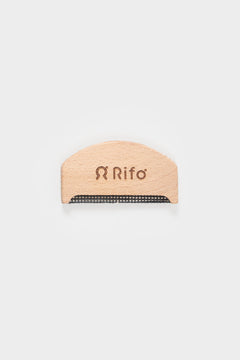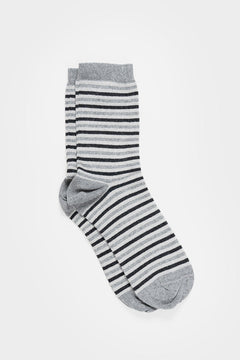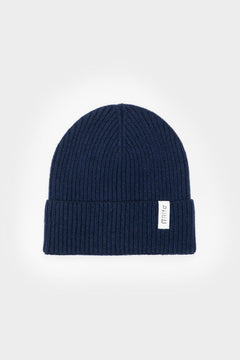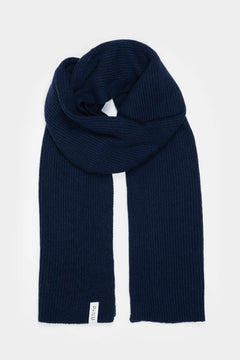What is the cost of sustainable fashion? Is sustainable fashion affordable compared to traditional consumer habits that are based on massive production and linear economy?
As an ethical, sustainable brand based on upcycled fibers, many people ask to Rifò these questions.
In most cases we are asked to justify the cost of our products. We are also asked how it is possible that a product from recycled textiles and old clothes could cost more than one made with virgin fibers.
It's normal: we are spoiled by years of fast fashion consumption, confused by the bargain prices due to the exploitation of labor at very low cost. Moreover we are also used to give to the brand an unbalanced value, compared to the real value of the product.
In this article we want to answer all those questions, in order to understand why an ethical and circular production is not automatically synonymous of a lower price. Sustainable fashion cannot be low cost.
Recycled is not less expensive than virgin
Let's start with the most important point: "it's recycled so why is it so expensive?"
First of all: unlike virgin material, recycled textile fibers cannot be taken and immediately transformed into a new fabric. Recycled or upcycled materials have an additional cost. There are in fact time and additional costs related to management: collection, selection, and only at the end a new transformation.

For this reason, it is necessary to consider the different availability of textile raw materials. They can come from crops, synthetic materials or animals.
In some cases, in fact, the cost of recycling fibers is higher than the production of virgin fibers. Cotton for example, which can count on a very large and massive cultivation, the recycling process becomes more expensive than the virgin production. The same happens for polyester yarn, which like all plastic comes from waste and needs a new coloring.
For animal fibers such as wool, we are talking about a different scale supply. Definitely limited if compared with vegetable fibers. This leads to effective economic savings, as well as a very low environmental impact, on the cost of recycled material compared to virgin material.
In fact our upcycled cashmere sweaters have a low and competitive price if compared to virgin cashmere sweaters of luxury brands.
If we consider cashmere wool, an even more exclusive material, we see how its production is even more limited than normal wool. Although we are seeing as well the intensification of these animal farms.
Compared with recycled materials and virgin materials, therefore, there are often not considered but notable differences.
Ethical and artisanal production Made in Italy
Once the actual costs of the material have been considered, we ask ourselves where and in what economic conditions a garment was made.
We at Rifò have from the beginning chosen the small and medium family production made in Italy. That world of craftsmen who preserve traditions and skills that need to be preserved. A world of attention to details and creativity that we don't want to be erased by large production.

It's true: in this way we can cut costs, thanks to a Mile0 production (and also saving on fuel consumption). But at the same time we want the work of our craftsmen to be valued and rightly paid.
For this reason, none of our garments is minimally comparable with a garment made in China, Bangladesh or Taiwan. For Rifò only the costs of producing a garments are mostly equivalent to the final price of the big fast fashion chains.
The small-scale economy
The Rifò philosophy is about producing only what is necessary in order to avoid overproduction.
This model, combined with the pre-sale modality, is good for the environment but does not allow us to reduce our unit cost. This also contributes to the cost of sustainable fashion. According to us, for quantities 50 times higher than ours, we may find a difference on the final price of 30-40% less.
For these reasons we like to define ourselves as equilibrists: in fact we always try to be able to produce a minimum that is not too large, but not too small to incur the need to raise prices. We believe that the limit dictated by common sense is the best guide.

Sustainable and recycled packaging
Using recycled packaging means first of all using materials not imported from Asia, where these products have no market and are not produced.
Furthermore, just as in the case of the textile fibers we have described above, recycling is expensive and recycled cellulose has a higher production cost than virgin fiber.
Finally, also eliminating plastic from packaging and moving towards plastic-free solution is not so obvious. Although things are slowly changing, there is still a much wider offer of packaging containing plastic and mixed materials that are difficult to recycle.
The best solution would be to be able to offer a zero waste alternative. For example, the Repack service, which we would also soon be available for our e-shop.
Get the certifications
GRS, OEKO TEX, GOTS do not fall from the sky. The producers of sustainable materials that can boast official awards such as certifications have invested time and resources in obtaining them. The certification process requires periodic checks, and the payment of tens of thousands of euros for the associations that work to release them.

Availability of materials
All these aspect are the direction for the future. The only way forward, even if the past seemed to lead us to another scenario.
We also like to think that these limits that we set, looking for only recycled and recyclable materials and producing at Mile0, are precisely our starting point for creating. We make wealth out of a scarce situation.
We start from the sustainable materials that are available near us, from the knowledge and expertise of the local craftsmen and we shape this material by putting our creativity into it. So we create a product with a contemporary concept starting from an ancient tradition.

Saving over time: the cost of sustainable fashion
Where is there then that there is real savings in sustainable fashion?
Maybe we need to turn the question upside down: is buying 10 T-Shirts for € 4.99 lasting a summer a saving?
Only if we change the way we give value to the goods, going beyond the cost of the tag and thinking about the long term, we could really perceive a saving. And together with this the value of the cost of sustainable fashion.
An example? Solid shampoo. True, its initial cost is higher than the supermarket bottle, € 12 against € 2-4. But the possible washes are double! So, consuming in a smart, eco-sustainable way also becomes convenient in the long term.
To do this, however, we must first ask ourselves: why do we buy? To satisfy a real need or just for boredom, to change, to accumulate? What is the right price of labor and materials?
So if you want to consume less but better, we just have to advise you to visit our online shop, you will find a lot of timeless products, designed to last and made according to our rules of sustainability.








